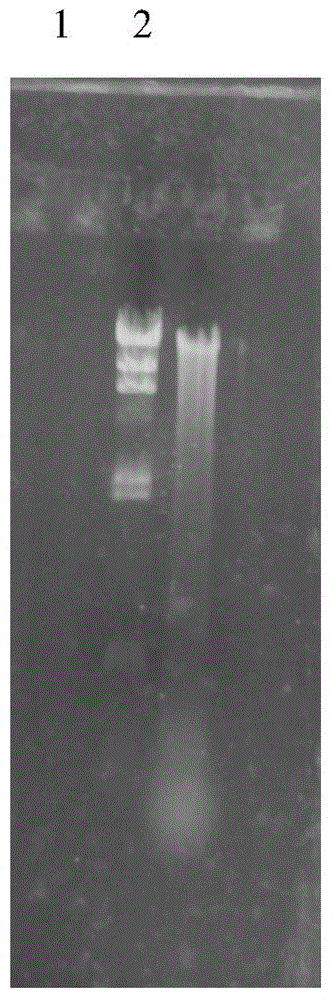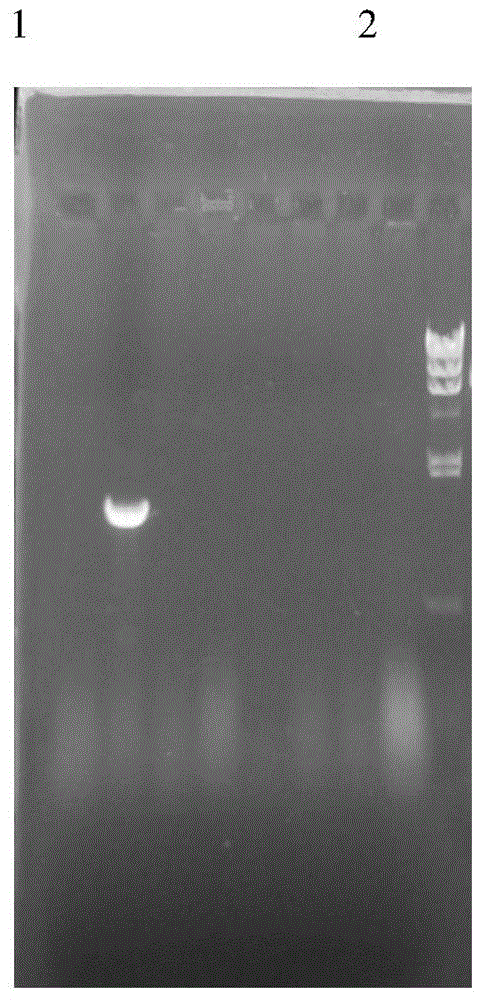High-stereoselectivity esterolytic enzyme, encoding gene and application of encoding gene
A stereoselective, ester hydrolase technology, applied in the fields of hydrolase, application, genetic engineering, etc., can solve complex, high cost, difficult to adopt and other problems, and achieve the effect of high stereoselectivity and high catalytic activity
- Summary
- Abstract
- Description
- Claims
- Application Information
AI Technical Summary
Problems solved by technology
Method used
Image
Examples
Embodiment 1
[0031] Example 1: Cloning of the BCEST gene from Bacillus cereus
[0032] Degenerate primers 1 and 2 were designed according to the genome DNA sequence of Bacillus cereus ATCC10876 (GenBank: ACLT01000051.1).
[0033] Primer 1 sequence: TCTAAAATTGAAACACCTGTTATG
[0034] Primer 2 sequence: TTATTTAATTTTCTTAAATGTAAGC
[0035]The genomic DNA of Bacillus cereus CCTCC M2012403 was used as a template for PCR amplification (using Takala kit). The PCR reaction system and reaction conditions are shown in Tables 1 and 2. Steps 2 to 4 are repeated 29 times.
[0036] Table 1: PCR amplification reaction system
[0037]
[0038] Table 2: PCR amplification reaction conditions
[0039]
[0040]
[0041] The PCR amplification product was detected by 0.8% agarose gel electrophoresis, and the product was a single band with a size of about 1500bp (such as figure 1 shown). Purify and recover the PCR product. For specific steps, refer to the instructions of the Beijing Biotech Genomic ...
Embodiment 2
[0042] Embodiment 2: Construction of expression vector and transformant
[0043] A-T ligation of the target fragment with the pEASY-E1 expression vector, the ligation system is as follows in Table 3:
[0044] Table 3: Connection system of pEASY-E1Expression Vector
[0045]
[0046] Mix gently and react at room temperature for 5 min. The ligation product was transformed into 50 μL of primary melted Trans1-T1 competent cells. PCR method to identify positive recombinants in the correct expression direction (such as figure 2 shown), transferred to LB medium to amplify the vector. The recombinant plasmid pEASY-E1-BCEST was extracted from Trans1-T1 cells with TaKaRa plasmid extraction kit, transformed into E.coli BL21(DE3) competent cells, and positive clones were obtained by screening with Amp-resistant medium and identified by PCR cloning. Containing the correct recombinant plasmid, thereby obtaining a transformant—a genetic engineering strain E.coliBL21(DE3) / pEASY-E1-BCES...
Embodiment 3
[0047] Embodiment 3: Expression of recombinant ester hydrolase
[0048] The genetically engineered strain E.coli BL21(DE3) / pEASY-E1-BCEST was inoculated into 50 mL of LB medium containing 80 μg / mL ampicillin, and cultured overnight at 37° C. with shaking. Take 1 mL of the culture solution and connect it to 50 mL of fresh LB medium containing 80 μg / mL ampicillin, culture to about OD600=0.6, add IPTG to its concentration of 0.2 mmol / L for induction, and continue to culture for 8 h. Bacteria were collected by centrifugation.
PUM
 Login to View More
Login to View More Abstract
Description
Claims
Application Information
 Login to View More
Login to View More - R&D
- Intellectual Property
- Life Sciences
- Materials
- Tech Scout
- Unparalleled Data Quality
- Higher Quality Content
- 60% Fewer Hallucinations
Browse by: Latest US Patents, China's latest patents, Technical Efficacy Thesaurus, Application Domain, Technology Topic, Popular Technical Reports.
© 2025 PatSnap. All rights reserved.Legal|Privacy policy|Modern Slavery Act Transparency Statement|Sitemap|About US| Contact US: help@patsnap.com



